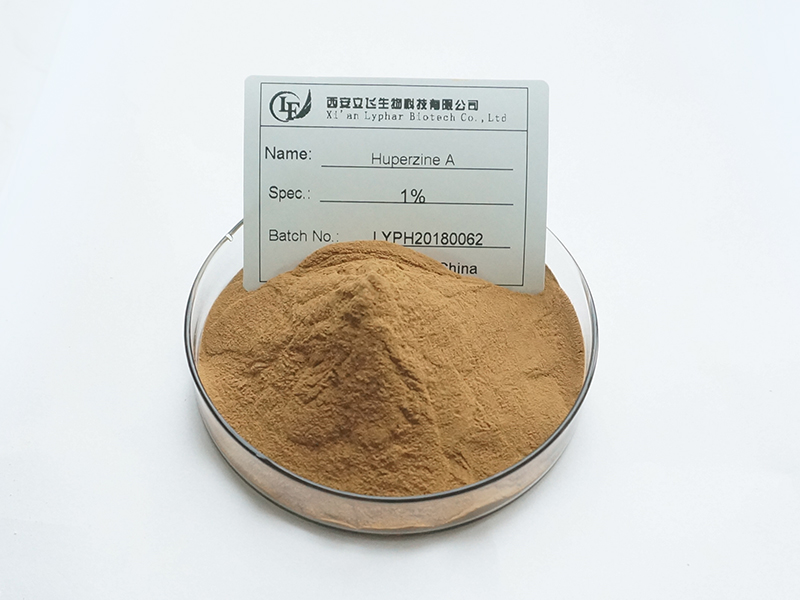Huperzine A is a naturally occurring alkaloid compound found in a particular species of firmoss (Huperzia serrata). It has garnered significant interest due to its potential cognitive-enhancing effects and its use in traditional Chinese medicine. Here’s a comprehensive look at Huperzine A based on current research:
1. Mechanism of Action
- Acetylcholinesterase Inhibition: Huperzine A primarily functions as an acetylcholinesterase inhibitor. Acetylcholinesterase is an enzyme that breaks down acetylcholine, a neurotransmitter critical for memory and learning. By inhibiting this enzyme, Huperzine A increases acetylcholine levels in the brain, which may enhance cognitive function.
2. Potential Benefits
- Memory and Cognitive Function: Research suggests that Huperzine A may improve memory and cognitive function, particularly in conditions associated with cognitive decline like Alzheimer’s disease. It is hypothesized to enhance learning, attention, and overall cognitive performance.
- Neuroprotective Effects: Some studies indicate that Huperzine A has neuroprotective properties, potentially protecting neurons from damage and promoting neuronal health.
- Other Potential Uses: There is ongoing research into the potential benefits of Huperzine A for conditions such as myasthenia gravis, schizophrenia, and age-related cognitive decline.

3. Clinical Studies
- Alzheimer’s Disease: Several clinical trials have investigated the use of Huperzine A in Alzheimer’s disease. While results have shown some promise in improving cognitive function, more rigorous studies are needed to establish its effectiveness.
- Cognitive Enhancement: Studies in healthy individuals have also explored the cognitive effects of Huperzine A, with mixed results. Some suggest potential benefits for memory and learning, while others show no significant effects.
4. Safety and Side Effects
- Generally Well-Tolerated: Huperzine A is generally considered safe when taken at appropriate doses. However, side effects such as nausea, vomiting, diarrhea, sweating, and insomnia have been reported, particularly at higher doses.
- Long-Term Use: Long-term safety studies are limited, so caution is advised, especially with prolonged use or in higher doses.
5. Dosage
- Typical Dosage: Typical doses used in studies range from 50 mcg to 200 mcg taken once or twice daily. It’s crucial to follow dosing guidelines to minimize potential side effects.
6. Availability
- Supplements: Huperzine A is commonly available as a dietary supplement, often marketed for cognitive enhancement and memory improvement.
7. Legal Status
- Regulation: In many countries, Huperzine A is sold as a dietary supplement rather than a prescription drug. Regulations regarding its sale and use vary.

8. Future Research
- Areas of Interest: Future research is likely to focus on clarifying its effectiveness in cognitive enhancement, exploring its mechanisms of action further, and assessing its potential benefits in various neurological and psychiatric conditions.
Conclusion
Huperzine A shows promise as a cognitive enhancer and neuroprotective agent, particularly through its action as an acetylcholinesterase inhibitor. While research supports its potential benefits for memory and cognitive function, more robust clinical trials are needed to establish its efficacy and long-term safety definitively. As with any supplement, it’s essential to consult with a healthcare provider before starting Huperzine A, especially if you have any pre-existing medical conditions or are taking other medications.
